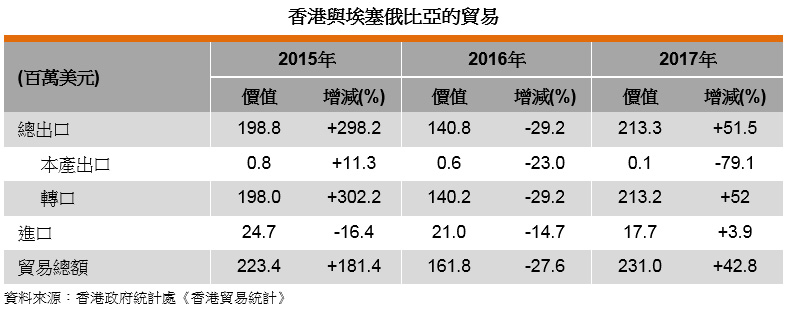General situation of Coffee Bean Brands in Ethiopian Market what kind of coffee beans to buy in Ethiopia

Professional coffee knowledge exchange more coffee bean information please follow the coffee workshop (Wechat official account cafe_style)
Ethiopia is a landlocked country in northeast Africa, located in the Horn of Africa, bordered by Eritrea to the north, Djibouti and Somalia to the east, Sudan and South Sudan to the west, and Kenya to the south. With a population of more than 90 million, Ethiopia is the second most populous country in Africa, after Nigeria. The capital Addis Ababa (Addis Ababa) is the largest city.
In view of per capita income, human resources and economic fragility, the United Nations rated Ethiopia as one of the least developed countries. However, over the past decade, the country's GDP has grown strongly, with an average growth rate of 11 per cent, mainly due to a booming construction industry and an increase in agricultural production. The World Bank expects Ethiopia to remain the fastest-growing country in East Africa in 2018. The government is trying to join the ranks of middle-income countries in the next 10 years.
Ethiopia's economy is mainly supported by agriculture and services, accounting for 36% and 42% of GDP, respectively. Coffee is the country's most important agricultural product, accounting for more than 40% of the country's total exports in 2016. Oilseeds, gold, legumes, potatoes and flowers are other major exports. Ethiopia is located inland and relies on the ports of Djibouti for overseas trade, while Asia and Europe are the largest export markets.
In 2015, Ethiopia adopted its second five-year growth and Transformation Plan (Growth and Transformation Plan) to implement appropriate economic policies and promote social development, aiming to achieve an average annual real GDP growth rate of at least 11.2% by 2020. In addition to increasing export earnings in the footwear and clothing industries, the Government has also actively developed a number of low-tech industries, including agricultural processing, meat processing, and leather and leather products. Since 1992, Ethiopia has adopted a managed floating exchange rate system. In October 2017, the National Bank of Ethiopia devalued the country's currency by 15 per cent in order to revive exports and improve competitiveness. The bank has also relaxed foreign exchange controls to allow exporters to obtain foreign exchange credit and allow them to retain up to 30 per cent of export foreign exchange earnings (10 per cent in the past).
Ethiopia relies heavily on imported machinery and consumer goods. More than 60% of the country's imports come from Asia, half of which come from China. Ethiopia actively uses its abundant supply of cheap labour to develop manufacturing. Textiles and clothing, leather shoes, leather products, horticulture and industrial parks are all important.
The country also adopts an industrial park development model with ready-to-use facilities to attract foreign direct investment. The Ethiopian Investment Committee is the country's official body aimed at attracting investment. Over the past year, Ethiopia has been very successful in attracting foreign direct investment. Cumulative foreign direct investment in the country reached $13.7 billion in 2016, more than tripling from $4.2 billion in 2010.
China is Ethiopia's largest trading partner, and bilateral relations have flourished over the past decade. Cumulative direct investment from China increased more than tenfold from $109 million in 2007 to $1.13 billion in 2015 and to more than $2 billion in 2016. China's direct investment is important in infrastructure development, telecommunications, energy and manufacturing.
With the assistance of China, Ethiopia built its first highway in 2014. The railway project in Addis Ababa is also heavily funded by Chinese capital. Chinese companies are also actively developing the country's industrial parks, with Chinese construction companies winning bids for a number of industrial parks in Addis Ababa and Jimma in early 2017.
Table: trade between Hong Kong and Ethiopia
[1] according to the World Bank classification, the per capita gross national income (GNI) of low-and middle-income countries is between $1026 and $4035.

Important Notice :
前街咖啡 FrontStreet Coffee has moved to new addredd:
FrontStreet Coffee Address: 315,Donghua East Road,GuangZhou
Tel:020 38364473
- Prev

How's the Panamanian Duran coffee? Panamanian coffee brands ranked Duran Coffe originally.
Professional coffee knowledge exchange more coffee bean information Please follow the coffee workshop (Wechat official account cafe_style) Panamanian coffee brand-Duran Coffee Coffee sells better coffee than Starbucks. When I was in Taiwan, I liked to joke about this brand because the correct pronunciation of Duran is exactly the same as the Taiwanese abusive word. Duran coffee, this has been translated.
- Next

Ethiopian Coffee Story which brand of Ethiopian coffee beans is good
Professional coffee knowledge exchange more coffee bean information please follow the coffee workshop (Wechat official account cafe_style) Starbucks, which has been the king of the world in recent years. To become a well-known fashion brand, in order to arouse the recognition of more consumers with the power of consumption, Starbucks proposed a commitment to the producing area of caffeine (Commitment to Origins; referred to as CTO) in 2003, and promoted
Related
- Detailed explanation of Jadeite planting Land in Panamanian Jadeite Manor introduction to the grading system of Jadeite competitive bidding, Red bid, Green bid and Rose Summer
- Story of Coffee planting in Brenka region of Costa Rica Stonehenge Manor anaerobic heavy honey treatment of flavor mouth
- What's on the barrel of Blue Mountain Coffee beans?
- Can American coffee also pull flowers? How to use hot American style to pull out a good-looking pattern?
- Can you make a cold extract with coffee beans? What is the right proportion for cold-extracted coffee formula?
- Indonesian PWN Gold Mandrine Coffee Origin Features Flavor How to Chong? Mandolin coffee is American.
- A brief introduction to the flavor characteristics of Brazilian yellow bourbon coffee beans
- What is the effect of different water quality on the flavor of cold-extracted coffee? What kind of water is best for brewing coffee?
- Why do you think of Rose Summer whenever you mention Panamanian coffee?
- Introduction to the characteristics of authentic blue mountain coffee bean producing areas? What is the CIB Coffee Authority in Jamaica?

